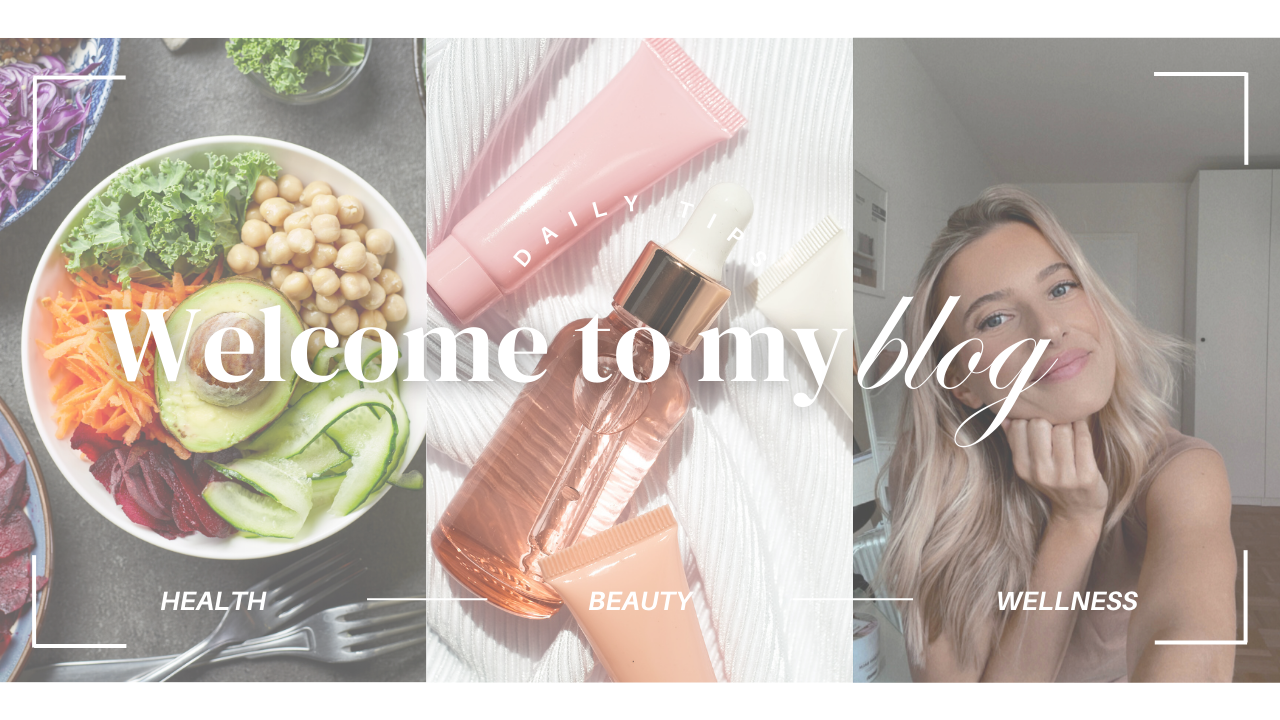
5 Tips for Healthy Hair
After I stopped taking the birth control a few years ago I suffered from severe hormonal fluctuations and had severe hair loss. I sometimes no longer knew how to wear my hair, because my hairline had slipped so far back that I even had to compete with my 60-year-old father when it came to receding hairline.
I was super insecure and frustrated. But I found the perfect routine to not only keep my ends and lengths healthy again so that they don't break off all the time, I also took care of my scalp.
Are Thick and Healthy Hair only Genetic?
Healthy hair is often seen as a sign of beauty and vitality. While genetics play a role, there are numerous factors and habits that significantly influence the health and appearance of your hair. Maintaining healthy hair involves a holistic approach that includes proper nutrition, good hair care practices, and overall lifestyle habits. In this comprehensive guide, we will delve into five essential tips for maintaining healthy hair, providing detailed insights and practical advice to help you achieve and maintain luscious locks.
Tip 1: Proper Nutrition for Healthy Hair
Your diet has a profound impact on the health of your hair. Hair is primarily made up of a protein called keratin, and just like every other part of your body, it needs a balanced supply of nutrients to grow and stay healthy.
Key Nutrients for Healthy Hair
-
Protein: Hair is made of keratin, a type of protein. To produce more keratin, your body needs an adequate amount of protein. Sources include lean meats, fish, eggs, beans, and nuts.
-
Vitamins and Minerals:
- Vitamin A: Essential for the production of sebum, which keeps the scalp moisturized. Found in carrots, sweet potatoes, and spinach.
- Vitamin C: Helps with the production of collagen, a vital part of hair structure. Citrus fruits, strawberries, and bell peppers are good sources.
- Vitamin E: Enhances blood circulation, helping more nutrients reach hair follicles. Found in nuts, seeds, and leafy greens.
- Biotin (Vitamin B7): Promotes hair growth and strength. Found in eggs, nuts, and whole grains.
- Iron: Prevents hair loss by supporting oxygen transport to hair follicles. Red meat, lentils, and spinach are rich in iron.
- Zinc: Helps repair hair tissue and maintain the oil glands around follicles. Found in oysters, beef, and pumpkin seeds.
-
Omega-3 Fatty Acids: Essential for keeping your hair hydrated and promoting hair growth. Found in fatty fish like salmon, flaxseeds, and walnuts.
Hydration
Staying well-hydrated is crucial for maintaining healthy hair. Water supports various bodily functions, including nutrient absorption and toxin elimination, which directly affect hair health. Aim to drink at least 8 glasses of water a day.
Tip 2: Proper Hair Care Routine
A consistent and proper hair care routine is fundamental to maintaining healthy hair. This involves knowing how to wash, condition, and protect your hair correctly.
Washing Your Hair
-
Frequency: The frequency of washing depends on your hair type and scalp condition. While oily hair may require daily washing, dry or curly hair might need washing only 1-2 times a week.
-
Shampooing:
- Use a sulfate-free shampoo to avoid stripping your hair of its natural oils.
- Focus on the scalp, where the most oil and product buildup occurs.
- Rinse thoroughly to remove all shampoo residues.
-
Conditioning:
- Always condition your hair after shampooing.
- Focus on the ends of your hair, which are more prone to dryness and damage.
- Leave the conditioner in for a few minutes before rinsing.
Additional Hair Care Tips
-
Avoid Hot Water: Wash your hair with lukewarm or cool water to prevent stripping the hair of natural oils and causing damage.
-
Drying Your Hair:
- Pat your hair dry with a microfiber towel or a soft t-shirt instead of rubbing it vigorously.
- Allow your hair to air dry whenever possible. If you must use a blow dryer, use it on a cool setting and keep it at least 6 inches away from your hair.
-
Brushing and Combing:
- Use a wide-tooth comb on wet hair to detangle it gently.
- Avoid brushing wet hair, as it is more susceptible to breakage.
- Brush your hair before washing to remove tangles and reduce hair loss during washing.
Tip 3: Protecting Your Hair from Damage
Hair can be easily damaged by various external factors such as heat, chemicals, and environmental pollutants. Taking steps to protect your hair from these damaging elements is crucial for maintaining its health.
Heat Protection
- Limit Heat Styling: Reduce the use of heat styling tools like straighteners, curling irons, and blow dryers.
- Heat Protectant Products: Always apply a heat protectant spray or serum before using any heat styling tools.
- Proper Technique: When using heat styling tools, use the lowest effective temperature and avoid holding the tool on any section of hair for too long.
Chemical Protection
- Coloring and Treatments: If you dye your hair or use chemical treatments, ensure that you are following the instructions carefully or getting them done by a professional.
- Choose Gentle Products: Use shampoos and conditioners specifically designed for color-treated or chemically treated hair.
- Space Out Treatments: Allow adequate time between chemical treatments to let your hair recover and minimize damage.
Environmental Protection
- Sun Protection: Prolonged sun exposure can damage your hair and scalp. Wear a hat or use hair products with UV protection when spending extended periods in the sun.
- Chlorine and Saltwater: Rinse your hair with clean water before and after swimming in pools or the ocean to minimize the absorption of chlorine or salt.
- Pollution: Regularly cleanse your hair to remove pollutants and consider using products that offer protection against environmental damage.
Tip 4: Regular Trimming and Scalp Care
Regular hair trimming and proper scalp care are often overlooked but are essential for maintaining healthy hair.
Regular Trimming
- Prevent Split Ends: Trimming your hair every 6-8 weeks helps prevent split ends from traveling up the hair shaft and causing further damage.
- Maintain Shape and Style: Regular trims help maintain the shape and style of your haircut, keeping your hair looking fresh and healthy.
Scalp Care
- Scalp Massage: Regular scalp massages increase blood circulation, promoting hair growth and relaxation. Use your fingertips to gently massage your scalp in circular motions for a few minutes daily.
- Exfoliation: Use a scalp scrub or exfoliating brush once a week to remove dead skin cells, excess oil, and product buildup. This helps keep the hair follicles clear and promotes a healthy scalp environment.
- Moisturize: Keep your scalp hydrated by using a lightweight, non-comedogenic oil or scalp serum. This helps prevent dryness, itching, and flakiness.
Tip 5: Stress Management and Healthy Lifestyle
A healthy lifestyle and effective stress management play a significant role in maintaining healthy hair. Chronic stress and poor lifestyle habits can negatively impact hair health.
Stress Management
- Relaxation Techniques: Practice relaxation techniques such as deep breathing, meditation, or yoga to manage stress effectively.
- Physical Activity: Regular exercise helps reduce stress levels and improves overall health, which in turn benefits your hair.
- Adequate Sleep: Ensure you get 7-9 hours of quality sleep each night. Poor sleep can disrupt hair growth and lead to hair loss.
Healthy Lifestyle Habits
- Avoid Smoking: Smoking can damage hair follicles and reduce blood flow to the scalp, leading to hair loss.
- Limit Alcohol Consumption: Excessive alcohol intake can dehydrate the hair and scalp, making hair more prone to damage.
- Stay Hydrated: Drink plenty of water to keep your body and hair hydrated.
- Healthy Diet: Maintain a balanced diet rich in essential nutrients to support overall health and hair growth.
Conclusion
Achieving and maintaining healthy hair requires a comprehensive approach that involves proper nutrition, a consistent hair care routine, protection from damage, regular trimming and scalp care, and a healthy lifestyle. By incorporating these five tips into your daily routine, you can significantly improve the health and appearance of your hair. Remember that everyone's hair is unique, so it may take some time and experimentation to find what works best for you. Stay patient and consistent with your efforts, and you'll be rewarded with beautiful, healthy hair.


